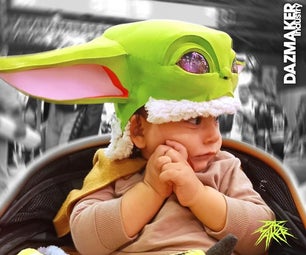Introduction: Cardboard Cruiser Card Stock Airplane
Here's a fun "old timey" design that flies pretty well. The corrugations bring to mind planes such as the Ford Trimotor.
I made a prototype with a fixed front landing gear, but it was too heavy and flew poorly. In the end, I'm fairly happy with this second version. It could use one or two improvements, but there's no time!
Supplies
-sheet of 12" x 12" corrugated scrapbook cardboard (which has small corrugations, such as these Kaisercraft sheets)
-non-corrugated cardboard sheet, approximately 6" x 6", from food or beverage packaging
-manila file folder, or medium sheet of card stock (80 lb / 215 gsm)
-scrap of white card stock or thick paper, approximately 1" x 2"
-wine cork
-liquid white glue and glue stick
-sharp kitchen knife or hobby knife
-ruler
-scissors
Attachments
Step 1: Fuselage
Draw the images from the plans (see PDF file) onto the appropriate material. Cut out the main fuselage piece from the corrugated cardboard. The measurements of the main piece are unusual because I was working with the width of the corrugations (there are five on both sides of the fuselage, and six on the top). I needed the angles of the fuselage to be in the valleys of the corrugations.
Use a rounded object to shape the top of the fuselage into an arch. Use a ruler to help you make the angles that define the sides and top.
Cut out the fuselage brace from the non-corrugated cardboard. As with the last piece, use a ruler to define the angles and a curved object to form the top. Apply liquid glue and unite the brace with the fuselage.
Step 2: Wing
Carefully cut out the wing. Use a ruler to establish a crease where the leading edge will be. Gradually bend the material all the way back and over. Apply glue with a glue stick. Press the layers firmly together. You may want to put it under a large book for several minutes.
To give the wing some undercamber, slide the leading and trailing edges over the edge of a table (the box is just for demonstration) whilst pressing down with your fingers (and it's better to use both hands). Repeat this until the material holds the desired shape. Another method is to just pinch along the leading and trailing edges. The wing should have a curve that looks like the one in the grey diagram.
Make the triangular relief cuts on the center line of the wing. Next, glue the reinforcing strips to the top and bottom surface. The longer of the two goes on the bottom, and should be about 8mm back from the leading edge.
Use a ruler to establish a crease on the center line of the wing. Raise the wing tips about 5 degrees above horizontal.
Step 3: Mount the Wing
The plans have a solo rectangle that should be cut out of non-corrugated cardboard. Crease it at the dotted line. Use liquid glue to attach it to the bottom of the fuselage, at the nose area. The short panel folds over the front and back into the fuselage.
Next, you'll need to make a saddle for the wing. Cut some strips of non-corrugated cardboard, all with a width of 1 cm. The base should be 4 cm; the other pieces measure 1.5, 0.8, 0.6 and 0.4. Glue the saddle to the bottom of the fuselage, 2 cm back from the tip of the nose. Once it has bonded to the fuselage, use a liberal amount of liquid glue to attach the wing. Make sure it is exactly perpendicular to the fuselage.
Step 4: Tail
The stabilizers are cut out of the manila folder (or medium card stock).
Slide the horizontal stabilizer between the sides and top of the fuselage, at the aft end. Apply beads of liquid glue and be sure the stabilizer is perpendicular to the line of the fuselage. Also, make sure the elevator protrudes from the tail of the fuselage. Hold the pieces together until the glue sets up, and scrape away excess as needed.
Cut two tabs (not in the plans) measuring 2 cm x 1 cm. Clip the corners every so slightly. Establish creases across the middle of each tab. Attach these to the vertical stabilizer, using liquid glue, then attach the stabilizer to the tail. Hold it in place until the glue bonds.
Step 5: Nose
CAUTION! This is the step that is most likely to cause injury.
Use a sharp kitchen knife to trim the cork to a length of 3 cm. Half of it will rest inside the fuselage and you must trim the bottom and sides of that half so it can slide in. Use liquid glue to secure it. If desired, use a strip of brown paper to wrap to cover the exposed portion of cork, and darken the end with a marker or paint.
Cut a piece out of the corrugated cardboard that can cover the lip of the cork (on the bottom side of the nose), and glue it in place.
Step 6: Final Details
I used some bits and pieces of cardboard, as well as some thick white paper, to create a cockpit and windscreen. The shape and size are up to you.
Darn! I placed it too far forward. I guess this plane has a very small engine.
Make an engine cowling out of a strip of manila folder. Attach it so it overhangs the cork slightly. You can make a propeller spinner out of the same material, or find a suitable object to use as a substitute. Attach it with liquid glue.
Step 7: Flights
Conduct test flights indoors, if you have space to do it. If testing outdoors, do so when the air is dead calm.
Only make very, very small adjustments to the rudder, elevators, and wing camber.
Due to variation of materials and construction, you may need to slightly adjust the fore-aft center of gravity of the glider. If it shows symptoms of being tail heavy, add some temporary weight to the nose and test it again. If it flies better, you can add permanent weight with additional layers on the nose area and cowling. If the weight makes it fly worse, remove the weight and try refining the position of the elevator.
Two common causes of poor flight are an overly light nose and asymmetries in the airplane's construction. To address the latter, get in the habit of regularly checking the glider from all angles for a twisted wing or similar defect. Work the material gently and in increments, and you can correct it!
I hope it flies well for you!
Step 8: Addendum
I put in some more work on this design. The materials aren't ideal, but I had fun. If big loops and turns are to be attempted, the wing will need additional strips for rigidity.

Second Prize in the
Cardboard Speed Challenge















11 Comments
11 months ago on Introduction
A few of your photos appear to show a simple device to locate the center of gravity. Could you say a bit about that, and how to construct such a device?
I've made several of your wonderful planes for my grandsons. The ability to control the wing curvature and that of the empennage, both vertically and horizontally, makes your planes great teaching tools. Thank you for the effort you've taken to make these fine planes and for your generosity in sharing them.
George G
Diamond Bar, CA
Reply 11 months ago
Thank you, George! Nice to hear that you and your grandsons are spending some quality time together.
I think you're referring to the white object that's in one of the first and one of the last photos above. It's a display stand made out of wood from my local hobby shop. It's held together with glue. I have made a bunch of 'em because I occasionally exhibit my work. The are also good for storage because I can flip a plane over every couple of weeks to prevent gravity from ruining the wings.
Come to think of it, I have used one to check CG by just tilting it 45 degrees, such that the corners are two small point of contact under the wings. The same can be done with two pencils, BBQ skewers, etc., by rigging them as vertical posts, usually just a couple inches apart. As a base, you could use a block of foam packing material, or even a soda can with rubber bands to hold the posts vertically on opposite side of the cylinder.
For designs with straight or slightly tapered wings, I want a CG that is 25%–30% of the length of the wing chord (at the wing root, to keep things simple) behind the leading edge.
1 year ago
I am thinking that the flat nose massively increases drag and thereby reduces perfomance. How about a nose cone of some kind, even just for flying, perhaps removable for display ?
Reply 1 year ago
You are correct! The flat nose is aerodynamically impractical. It's not as terrible as I expected, though. Perhaps that has to do with the small size of this design (only 17 cm long). As a bonus, the flat nose holds up well to impacts!
1 year ago
Nice project! I'll definitely give it a try later
1 year ago on Step 4
Can you give some example of "food or beverage packaging" cardboard that would work for the wings? Would the cardboard from a cereal box work?
Reply 1 year ago
Thanks for the question. The non-corrugated cardboard (aka chipboard) is for the interior reinforcement and some bits on the exterior, such as the windscreen frame. The wings are made from an old file folder. I usually use pasta boxes, six-pack boxes, backs of notepads, or 12"x12" chipboard sheets from a craft store. Cereal boxes are sometimes too thin.
1 year ago
I love reading and looking at these designs of yours and more importantly your suggestions for getting them to fly right.
This one is very different from most of your designs and it sounds like you still want to tinker with it - have you considered making it a high wing design to make it even more 'old timey'?
Reply 1 year ago
Thanks, TedWiz. The encouragement means a lot to me. ... You're right about the high wing. The prototype, in fact, had a parasol wing! But parasol wings don't fly well, in my experience (too much of a pendulum effect, I think). If I make a YouTube video to accompany this Instructable, I will include a version with a high wing. Thanks!
Reply 1 year ago
That's a bit of a surprise - did you try flattening the dihedral? Most high wingers have a very little to none- a flat wing.
Reply 1 year ago
I'll try that. This one is very dihedrally!